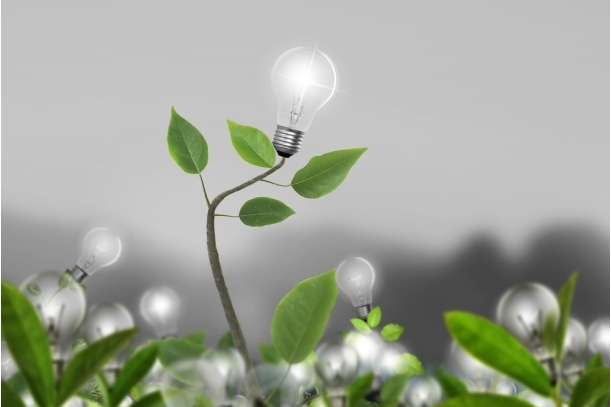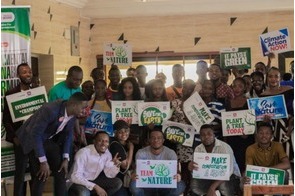Innovating for a sustainable world

Summary
Businesses don’t have to choose either to be successful or sustainable. They should be both through innovation.
Innovation is one of the cornerstones for achieving sustainable development. But in reality, innovation has not always aligned with sustainability principles. It may be quite dramatic to assert that some innovations have majorly contributed to the challenges the world faces. However, innovations that power industries and mobility with fossil fuels have contributed the most to global warming, which is threatening human existence because of its adverse impacts on the food system and social life.
Urban development, which entails the provisioning and use of modern facilities that appear to make city life a fantastic experience, has tended to upset natural habitats and remove the natural protection that trees provide against the human inhalation of carbon dioxide emitted into the atmosphere. In real estate development, especially in the cities, the apparently more beautiful houses require heavy exploitation of natural resources to build and live in them.
Many of the innovations that are proving harmful to the natural assets that humanity depends on for continued existence have been responsible for the astonishing level of economic growth and the financial prosperity the world has experienced since the invention of the steam engine in the 18th century. Without innovations such as electricity, various forms of telecommunication and modern transportation, the world would have become a very difficult place to live in. This would be especially so if the absence of such innovative and technological solutions did not abate the population growth the world has experienced.
The good news is that innovation, by its very essence, is not static or necessarily linear. Some harmful technological innovations can be abandoned, while others can be adapted for sustainable development. Governments, businesses, non-profit organisations, educational and research institutions, and individuals have remained committed to finding the better ways of producing existing products, innovating for new solutions, and improving the distribution of products.
After the invention of the energy-inefficient, incandescent light bulbs by Thomas Edison over 140 years ago, we now have the energy saving bulbs. The need to limit the use of energy by those who currently have access, at a time when nearly one billion people still don’t have, has seen the development of motion sensitive light bulbs as a further measure to conserve energy. The design of green buildings has also seen many indoor spaces lighted by sunrays.
The innovations and technological solutions that are sustainable should have many attributes. They should help in limiting global warming to well below 2, preferably to 1.5, degrees Celsius, compared to pre-industrial levels as set in the 2015 Paris Climate Agreement. Technological know-how should be broadly shared, as opposed to the current practice where only a handful of countries monopolise the knowledge.
To align with the sustainable development principle of not leaving anyone behind, innovations should support social transformation, from the economic disempowerment of most people to the empowerment of all. In other words, innovations should support shared prosperity; quite importantly, it should foster the joint stewardship of the earth’s resources.
Because sustainability has only become more mainstream recently, the systems, norms, and attitudes for innovating for sustainable development have yet to become a set of shared ideals. Many businesses, including those that are already the most financially successful, are still hypercompetitive. In the tech sphere, they operate like predators, hunting down the development and emergence of new innovators and innovations that may compete against them.
Also, there are business leaders who are still focused entirely on financial performance. While economic gains may be incidental to their top line figures, they pay scant attention to the community where they operate and could hardly care less about the environment. Worse still, the net impact of the activities of most operators on the society and the environment is negative.
The 1987 Bruntland Commission Report defines sustainable development as “development that meets the needs of the present without compromising the ability of future generations to meet their own needs.” According to the United Nations, sustainable development calls for concerted efforts towards building an inclusive, sustainable and resilient future for people and the planet. The global body advocates the harmonization of economic growth, social inclusion and environmental protection in order for sustainable development to be achieved.
Economic, social and environmental goals are not mutually antagonistic. Instead, for all actors, especially businesses, the pursuit of the three goals, otherwise referred to as the triple bottom-line, simultaneously, best underpin economic performance over the long-term. Businesses don’t have to choose either to be successful or sustainable. They should be both through innovation.
Goals 9 of the Sustainable Development Goals (SDGs) is “Build resilient infrastructure, promote inclusive and sustainable industrialization and foster innovation.” The UN has further recognised the role of science, technology and innovation (STI) for achieving the SDGs. The challenge is how to mobilise STI under the auspices of the 17 SDGs.
In a working paper, Laura Diaz Anadon, et al, of Harvard Kennedy School shed light on the complexity of adapting innovation for achieving sustainable development. They asserted that sustainable development requires harnessing technological innovation to improve human well-being in current and future generations. But they also recognised that some populations lack the economic and political power to shape the innovation process to meet their needs.
This is not an insurmountable challenge. The authors advocated for three solutions for re-orienting innovation for sustainable development. These are mobilizing global financing to invest in inventing suitable and affordable technologies to meet sustainable development objectives, developing measures to engage marginalized populations systematically through all stages of the innovation process, and establishing channels for regularized learning across domains of practice.
We would like to offer some caveats on the three measures. Dependence on so-called global capital for local development has yielded little result while fostering dependency. Developing countries including Nigeria should seek to optimise domestic capital for local development. More broadly, local problems should be addressed by local solutions, which may, however, be based on global principles, adaptive ideas and partnerships.
It is also pertinent that developing countries prioritise investment in the development of their innovation learning system. In Nigeria, such systems are concentrated in the schools and in few companies in the organised private sector, which account for a small percentage of the entire production system. This has resulted in low productivity, and it needs to change.
The potential canvass of innovation for sustainable development is broad and encompassing. Businesses should find their place in it. As it has been said, it is not enough to not be part of the problem. We all have to be part of the solutions in our sectors, industries, businesses, and importantly in the communities where we operate.
Bilaad Realty Limited is an Abuja-based company focused on delivering sustainable real estate solutions.
Related
-
PUMA showcases products from recycled materials in push for 3Rs
Through its RE:COLLECTION range, PUMA is demonstrating its commitment to the 3Rs – Reduce, Reuse, and Regenerate ...
-
Re-innovating for sustainability
At Bilaad Realty, our strategy is aligned with achieving the SDGs, which provide a comprehensive framework for targeting ...
-
Access Bank supporting innovation and sustainable agriculture
Access Bank continues to show its commitment to innovation to help address social, environmental and economic challenges.










